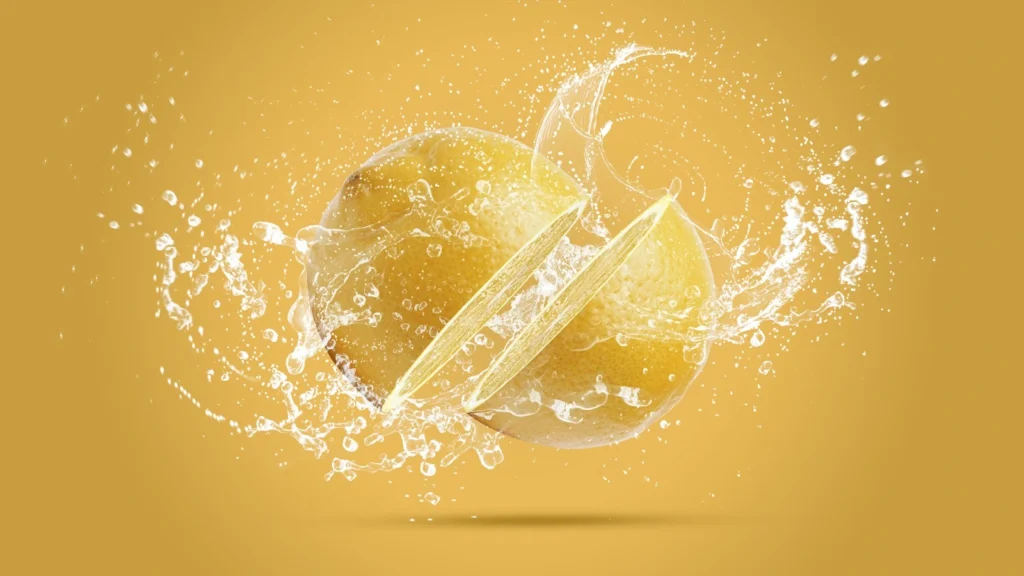Welcome to our photography blog, where we delve into the fascinating world of filters and effects. In this digital age, photo enhancement has become an integral part of photography. From adding a touch of nostalgia with black and white filters to creating captivating visual effects, endless possibilities are open with photo effects and photo filters.
In this blog, we will explore the concept of photo effects and photo filters and also introduce you to some amazing photo effects that can elevate your photography to new heights.
What are Photo Effects?
Photo effects refer to the various alterations and enhancements to digital images to transform their appearance, mood, or visual impact. These image effects allow photographers and enthusiasts to unleash their creativity, adding a unique touch and personal style to their photos. Special effects like blur, selective focus, and HDR are used to create depth, emphasize specific subjects, or enhance details and textures. These effects can give images a professional and polished appearance. Proper application of effects can transform ordinary photos into captivating visual masterpieces.
Why do People Need Photo Effects & Filters?
Photo effects and filters can play a huge role in making your photos look aesthetic and detailed. There are many advantages effects and filters can provide if used properly. Some of them are:
1. Add contrast and color
Using photo filters is an excellent technique for enhancing your landscape photos, and one of the most popular filters on the market today is the polarizing filter. There are several advantages to using polarizers in your photography. Firstly, they effectively reduce reflections, such as those on glass or water surfaces. This helps to eliminate unwanted glare and allows you to capture clearer, more captivating images. Additionally, polarizing filters can restore natural color saturation and enhance contrast, particularly in outdoor scenes. Position your camera at around a 45-degree angle to the sun to maximize the effect.
2. Creating a movement
Photo filters offer another valuable advantage: the ability to introduce motion into your images, adding dynamism to what might otherwise appear static.
For long exposure photography, the 10-stop and 6-stop ND filters are particularly useful. The 10-stop filter works wonders for extending exposure times, resulting in beautifully blurred moving elements within your images. It’s perfect for capturing the graceful motion of foliage, clouds, or flowing water. On the other hand, the 6-stop ND filter proves beneficial in low-light conditions during dawn or dusk, allowing you to achieve balanced exposures.
3. Balanced exposure
Filters can be utilized to accurately capture a scene, and one essential tool for achieving this is the Neutral Density (ND) graduated filter. Its primary purpose is to reduce the amount of light entering the camera through the shaded gray section of the filter, allowing for a proper representation of the scene.
For scenes with straight horizons, hard ND grads are recommended, whereas soft grads are more suitable when objects like buildings or trees intersect the horizon. These filters are available in various strengths, such as 0.3, 0.6, 0.9, and 1.2 gradations, with each reducing the exposure by a corresponding number of stops of light. The gradation determines the intensity of the transition from dark to light, with 0.3 being milder and 1.2 being stronger.
4. Achieve enhanced images
Utilizing photography filters can significantly enrich your photography, particularly when exploring the realm of special effects filters.
To achieve specific effects, you can incorporate dedicated special effect filters into your filter holder. Examples include infrared filters, black and white filters, and filters designed to emulate the colors of sunset and sunrise. These filters infuse your images with warm tones, enhancing the visual impact of dawn and sunrise scenes. Mist and fog filters are also popular for creating a mist-like effect by carefully positioning the filter in the holder. They can be used not only to mimic natural mist but also to eliminate distracting backgrounds, resulting in clean and minimalist compositions.
5. Change the white balance
When you’re immersed in capturing breathtaking landscapes, there might be instances where you desire to modify the color temperature of the scene. Introducing specialized color temperature filters into your photography workflow can prove invaluable for achieving precise color tone adjustments without introducing any unwanted color casts.
Exploring the use of photography filters designed to enhance or cool down the white balance allows you to attain accurate color temperature corrections. These filters act as a valuable tool for fine-tuning the color temperature of your images, ensuring a faithful representation of the scene.
Amazing Photo Effects You Should Know About

There are various types of photo editing effects that you can try:
1. Light Painting
Creating captivating light painting imagery demands long exposures, which are best executed during nighttime shoots. The essential equipment to embark on this artistic journey includes a tripod, a camera equipped with a slow shutter speed function, and suitable light painting tools. In light painting, the camera remains stationary while the light source is skillfully manipulated to produce mesmerizing effects. Conversely, the camera is set in motion in kinetic light painting while the light source remains fixed.
2. Silhouettes
One of the visually captivating effects in photography is the creation of a silhouette when capturing an object or person against a backdrop of a much brighter sky. This technique offers a straightforward yet impactful way to convey depth and contrast in your images. By positioning the subject against the radiant sky, you can achieve a striking silhouette that highlights the contours and outlines of the subject, resulting in a visually compelling composition. This well-known approach is often considered the “low hanging fruit” of photography effects, offering accessible and impressive results. This kind of effect is widely used for model photoshoots.
3. Reflections
Numerous enchanting locations provide opportunities for capturing captivating reflections. While a pond is often the first to come to mind, it’s merely the tip of the iceberg. Countless other possibilities await, each offering unique reflective surfaces to explore. From tranquil lakes and glistening rivers to sleek glass facades and polished metallic structures, the world is brimming with potential reflections. If used properly, this effect can also help food photographer capture amazing images of a simple food.
4. Bokeh effect
Bokeh refers to the visually pleasing blur created by a shallow depth of field. However, not all backgrounds lend themselves well to producing desirable bokeh. For instance, a clear and blurry sky would be less favorable. Instead, seek out sources of light or sunlight reflecting off objects in the background. To achieve the desired effect, it’s crucial to create a separation between the main subject in the foreground and the background lights.
5. Lensball
The lensball is an intriguing camera optic that allows you to capture unique refracted images within its glass. Adding a lensball to your camera bag opens up a world of creative possibilities. This versatile tool can be used for both portrait and landscape photography, although its true potential shines when capturing breathtaking landscapes. There are numerous approaches to photographing the lensball, but one popular method involves using a macro lens. This lets you focus on the mesmerizing image reflected in the ball while creating a beautiful bokeh background blur.
6. Infrared photography
By employing picture filters or modifying your camera setup, you have the ability to capture mesmerizing infrared photos. Infrared light falls outside the visible spectrum, rendering it invisible to the naked eye. Consequently, when using an infrared filter, the scene appears black. However, the filter allows infrared light to pass, enabling you to craft a surreal dreamscape effect. Since capturing infrared photos involves long exposures, a sturdy tripod is essential.
7. Long exposure
In addition to light painting and infrared photography, there are numerous applications for long exposures. Regardless of the technique, a tripod is essential for achieving optimal results in all these scenarios. Explore the endless possibilities and unleash your creativity with the magic of long exposure photography.
8. Digital blending
Landscape photographers greatly benefit from this technique, known as manual HDR post-processing. By utilizing luminosity masks in Photoshop and a series of bracketed images, you can achieve a balanced and realistic lighting effect across the entire frame. Unlike plug-and-play HDR programs, digital blending completely controls the final result. If you’re passionate about landscape photography, mastering this photo effect is necessary.
9. Low key lighting
Portrait photographers often favor the captivating effect of Low Key Lighting. By darkening the background and illuminating only the subject’s face, you can create a striking visual impact. This effect can be achieved using either natural or artificial light sources. Employing off-camera flash provides greater control and precision for capturing stunning low-key portraits.
10. Panning to Capture Movement
Panning involves tracking a moving subject with your camera while using a slower shutter speed, resulting in a distinctive effect. Any moving object can be panned, with cyclists and cars particularly suitable for capturing sharp images.
To retain motion in the background, adjust the shutter speed based on the speed of the subject. For fast-moving objects like Formula-1 cars, a shutter speed of around 1/80th works well, while a walking person may require 1/10th.
What are Photo Filters?
In the realm of photography, photo filters serve as essential tools for selectively modifying the wavelengths of mixed light before it reaches the film. These filters come in various forms, including colored glass, plastic, gelatin, or even colored liquid housed within a glass cell. Typically, they are placed over the camera lens, although they can also be positioned over the light source to achieve the same effect.
When working with black-and-white films, which lack perfect color sensitivity, filters play a crucial role in modifying the light and translating the subject into grayscale tones that closely resemble what the human eye perceives. Furthermore, colored filters can also influence the reproduction of colored objects by either brightening or darkening them, thus allowing for localized contrast adjustments during the exposure process. In the realm of color photography, these colored filters are employed to modify the color qualities of light, aligning them with the film’s color sensitivity.
Stunning Image Filters You Should Try
1. Black and White Filters for a Dramatic and Timeless Touch
Black-and-white photography holds an enduring charm, as does the process of determining which of your photos will be enhanced by this timeless aesthetic. Capturing the elegance of a ballet dancer in a black-and-white style photograph presents a classic allure. While shooting with black-and-white film is an option, it can limit your creative options during a photo session. What if certain images shine in the full spectrum of color while others benefit from the grayscale medium? This is where using a black-and-white filter or preset becomes invaluable, granting you the flexibility to transform images that excel in grayscale while leaving others that thrive in color.

However, selecting a black-and-white preset is just the beginning. The subsequent step involves manipulating the color values of an image to create striking contrasts within the grayscale spectrum.
For instance, when photographing a portrait against a backdrop of lush foliage, intensifying the yellow filter can accentuate the subject’s skin tone. Reducing the influence of the green filter can underexpose the backdrop, allowing the subject to stand out with a lighter shade of gray. Ultimately, employing a black-and-white preset introduces an unexpected dynamism to photos that might otherwise appear flat.
2. Minimalistic Photo Effects That Play Well With Natural Beauty
In the world of filters, sometimes less is more. Minimalistic effects have a unique charm that complements the inherent beauty of natural subjects, allowing them to shine in their purest form. These filters provide a subtle enhancement, preserving the authenticity and simplicity of the scene while adding a touch of artistic flair. Minimalistic filters often emphasize clean lines, soft tones, and gentle adjustments, creating a serene and harmonious visual experience. They work harmoniously with landscapes, nature photography, and portraits, highlighting the natural beauty without overpowering it.

One popular minimalistic effect is the “Soft Glow” filter, which adds a delicate, dreamy aura to your images. It softens the edges, creates a gentle diffusion of light, and imparts a serene atmosphere to the scene. This effect works wonders in capturing the enchantment of sunsets, ethereal landscapes, and close-up shots of delicate flowers.
When experimenting with stunning image filters, don’t overlook the power of minimalistic effects. These subtle enhancements can elevate your photographs, allowing the natural beauty of your subjects to shine through with grace and authenticity. Embrace the understated elegance and explore the world of minimalistic effects to add a touch of artistic allure to your images.
3. Blur Effects to Provide Main Focus on Important Object
Regarding photo filters, blur effects can be a powerful tool in directing attention to the key elements within a photograph. By selectively blurring certain areas, these filters create a visual hierarchy that draws the viewer’s gaze to the focal point, allowing what’s most important to take center stage. One popular blur effect is the “Depth of Field,” which mimics the natural focus of a camera lens. Applying a shallow depth of field blur to the background or foreground accentuates the subject, separating it from the surrounding elements. It’s ideal for portraits, still-life photography, and any scene where you want to create a sense of depth and visual separation.

For a more artistic approach, the “Gaussian Blur” filter softens the entire image, giving it a dreamy and ethereal quality. This effect can add a sense of mystery and evoke emotions in the viewer, making it particularly suitable for conceptual photography, landscapes, and romantic or nostalgic scenes.
When experimenting with blur effects, it’s crucial to balance focusing on the main subject and maintaining enough clarity to retain context and visual interest. Using blur strategically, you can create visually compelling compositions that guide the viewer’s gaze to what truly matters within the frame.
Spyne AI- Easy-to-Use Photo App
Disappointed with the results after dedicating hours to editing photos? Your search for a hassle-free photo editing solution ends with Spyne, an AI-powered photo editor that takes your editing experience to the next level. With Spyne, the ultimate photo editing app available for both PC and smartphones, you can effortlessly enhance your images to professional-grade quality in a matter of minutes.
Spyne offers a wide range of industry-specific editing tools that cater to diverse needs. From window tinting, number plate masking, 360 spin view generation, and background removal and replacement for automobiles to edge straightening, product photography background replacement, image validation, watermark removal, and angle correction, Spyne’s AI-powered algorithms automatically enhance your images, eliminating the need for any prior editing expertise.
But that’s not all. Spyne’s tools are meticulously designed to give your photos a refined and professional appearance, and they also support bulk processing, allowing you to effortlessly process hundreds of images within seconds. With its user-friendly interface and intuitive design, Spyne is an ideal choice for commercial use. Whether you aim to boost your social media presence, showcase products on an e-commerce platform, or create impactful marketing materials for your business, Spyne has got you covered.
Moreover, Spyne offers a cost-effective solution that saves you valuable time and money. Unlike traditional PC photo editing apps that require expensive software or hardware investments, Spyne only requires a device with an internet connection, making it easily accessible to everyone.
Don’t wait any longer! Visit Spyne today and sign up for a free trial. With Spyne’s efficient tools, you can elevate your image enhancement to a professional level within minutes, transforming your photos like never before.
Conclusion
In conclusion, photo filters and editing effects have revolutionized how we approach photography. They provide us with tools to enhance and transform our images and also allow us to make cool photo effects. These techniques allow us to tell stories and evoke emotions through our visuals. With the introduction of user-friendly applications like Spyne AI, editing and applying photo editing effects have become more accessible than ever. Spyne AI’s intuitive interface and advanced features make it a valuable tool for photographers of all levels.
So, embrace the world of effects and filters, explore their endless possibilities, and unleash your creativity. Experiment with different techniques, discover your personal style and captivate your audience with stunning visuals. Remember, photography is not just about capturing moments; it’s about transforming them into extraordinary.




























